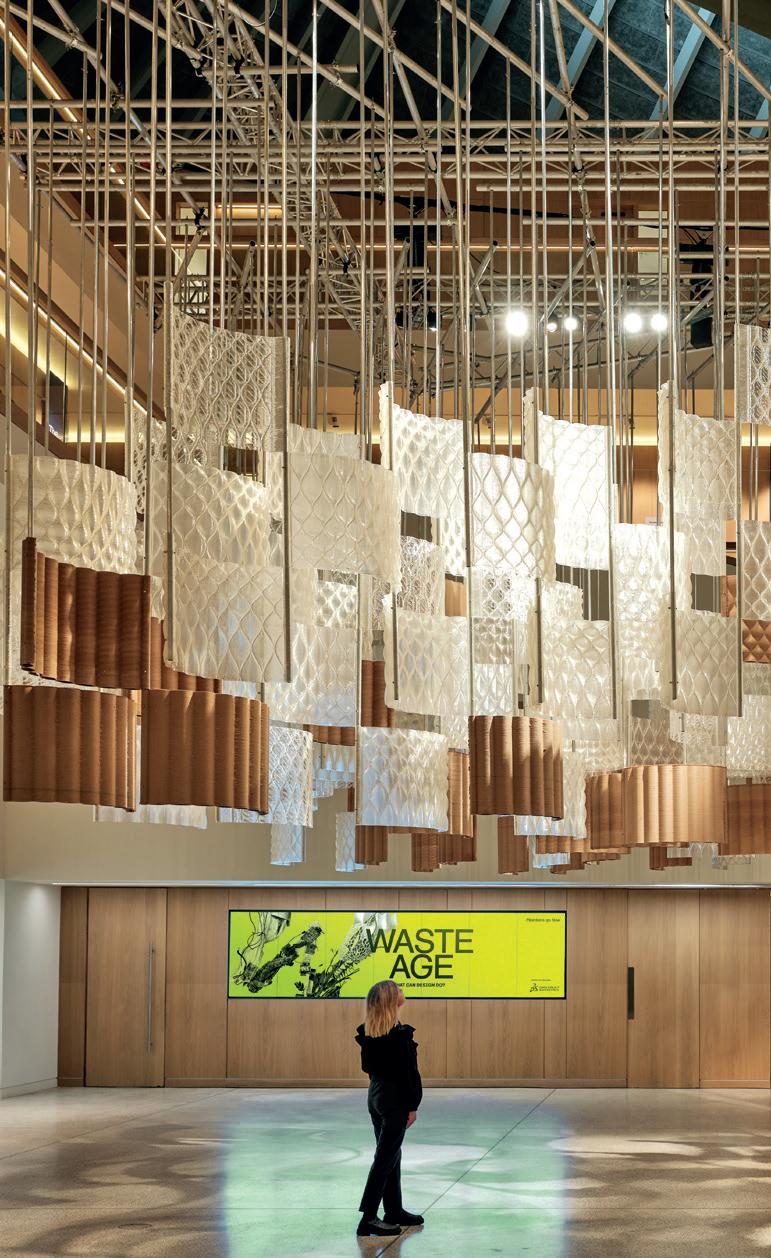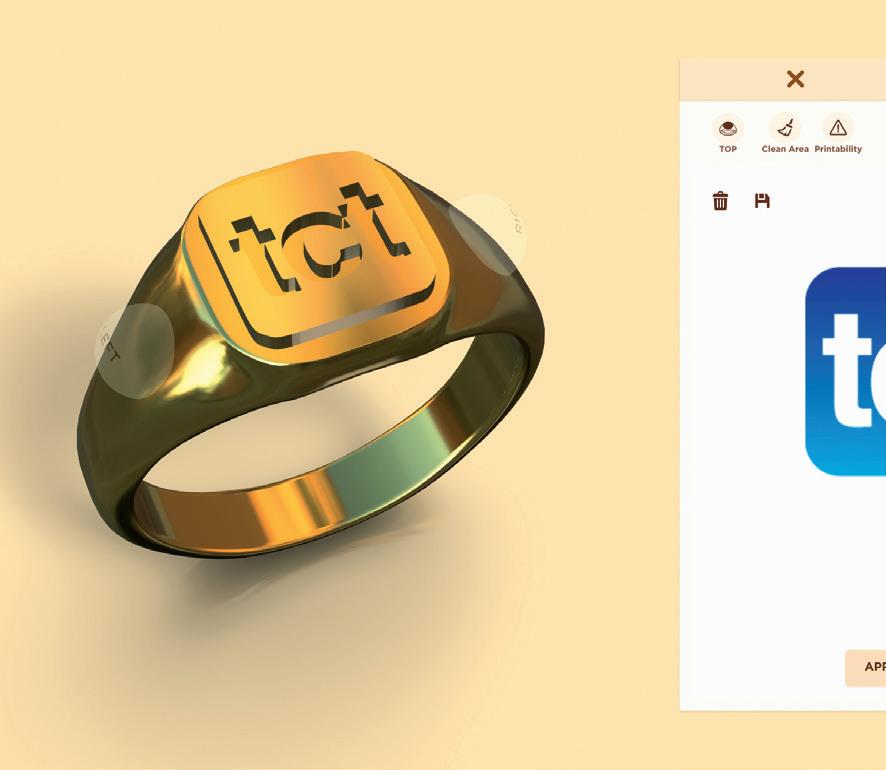DESIGN'S NE L
ast year I got to attend an exhibition at the London Design Museum in the comfort of my pyjamas. No, I wasn’t testing the dress code or parameters of social etiquette, this was the product of a recent Dassault Systèmes collaboration featuring 3D printing, new materials, and a virtual twin environment that allowed me to take in a new art installation from the glow of my laptop screen. It’s called AURORA which, in addition to being the name of a striking light phenomenon, also translates to “new dawn” and is precisely what the project’s collaborators hope to inspire for the future of design. “We spent some time discussing this name, this new dawn about how we can leverage technology in the design process,” Anne Asensio, VP Design Experience at Dassault Systèmes and head of the Design Studio, told TCT from a more familiar virtual environment: a Zoom call. “It's also an optimistic view of the future. We wanted to promote our human approach to technology, and overall demonstrate where technology is not just given, but could be a great means to address those very important changes that are ahead of us.”
Arthur Mamou-Mani, renowned architect and AURORA designer added from a different Zoom window: “I think we both wanted to have a notion of what's next and what's after COVID? What's after this crisis?” It’s a question touching most industries as the impacts of the pandemic continue to ripple through supply chains and day to day life, but one the collaborators feel creatives and designers, given the right tools, could be uniquely equipped to answer. AURORA takes the form of a series of waves, or modules, manufactured locally at Mamou-Mani’s FabPub in London with 3D printing in bio-sourced PLA, and suspended in the air using steel tubes. It’s the third instalment from Dassault Systèmes’ Design in the Age of Experience initiative, developed within its own cloud-based 3DEXPERIENCE platform, and forms part of the Design Museum’s “Waste Age: What can design do?” exhibition, exploring design’s role in sustainability.
018 / www.tctmagazine.com / 30.1
Describing how the two came to work together, Mamou-Mani recalls how they were each “at the crossroads between tech and the circular economy,” with a need to make technology “purposeful, as opposed to just for its own sake.”
SHOWN: AURORA INSTALLATION AT THE LONDON DESIGN MUSEUM
Asensio elaborated: “It's more about collaboration, experimentation with like-minded people, looking at a very important challenge that is, in this case, waste, but it was really about creating the condition of the best collaboration.” AURORA’s modules are said to have been inspired by a dry cactus and the movement of its cellular structure. Initially designed in 3D, the team then used Dassault Systèmes’ xGenerative Design to build the larger architectural structure before creating a virtual twin experience that places AURORA within a live model of the Design Museum. It’s here where the team were able to simulate the effects of elements such a lighting and airflow to inform AURORA’s design – and also how I got the chance to visit and interact with the installation remotely. The modules were printed using a PLA made from potato starch, chosen not just because of its biocompatibility, but the ease at which it can be crushed back down and re-used for further 3D printing, taking advantage of the material’s unique aesthetics. “When it comes to working with a material that's quite new and therefore quite whimsical, the material does its own thing. If one does not adapt their own ideas to that material then it can be very challenging,” Mamou-Mani explains, pointing to a shelf in the foreground featuring an array of trials and test prints. “When we worked with the PLA bioplastic, it did its own thing, and the machine also had its own way of working. So it is kind of upside down where the machine tells us what it wants, the material tells us what it wants, and then we adapt to that as opposed to the other way around.” Using Life Cycle Assessment solutions within the 3DEXPERIENCE platform, the collaborators discovered they were able to save six tons of CO2 using this material compared to petroleumbased plastic. But this material choice, even with its clear advantages, also highlights how there’s no one size fits all solution to sustainability. “There's this big contradiction that's worth highlighting between something that's durable, i.e., sustainable, and something that you want to biodegrade, i.e., disappears,” Mamou-Mani explained. “What I like about PLA is that it sits right in the middle, it can disappear if you put it at the right conditions but it won't do it on its
own so that means that you can activate the biodegradability. Or you can let it last for a long time.” The words ‘exploration’ and ‘experiment’ come up a lot during our conversation. “An interactive experimentation of how we can achieve a more sustainable approach to life in the future,” reads the description on the Design Museum’s website, and Mamou-Mani is open about the fact that before meeting with Asensio’s team, the 3DEXPERIENCE platform was a completely new way of working for the studio, requiring a “process of discovery.” But Asensio is keen to emphasise the flexibility the platform provides for designers, and how creativity can encourage different ways of seizing the technology, resulting in new solutions to challenges. “Technology is often seen as very rigid, dogmatic, driven by a deterministic approach,” Asensio explained. “That’s not our way of doing it. We see the 3DEXPERIENCE platform as a very open, easy, collaborative virtual workshop. And it's nice to actually trigger those questions of what do we observe in nature? How can we translate that into a technological application and how can we play with it?






